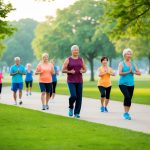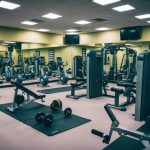
In a world where fitness trends come and go, functional fitness stands out for its practicality and holistic approach. This fitness philosophy, focused on preparing the body for real-life movements and activities, is becoming increasingly relevant in our daily lives. This comprehensive guide delves into the world of functional fitness, exploring its benefits, key exercises, and how to integrate it into your daily routine.
The Essence of Functional Fitness
Functional fitness is about training your body to handle real-life situations. It involves exercises that mimic everyday actions, enhancing your ability to perform daily tasks with ease and efficiency. Unlike traditional workouts that isolate specific muscles, functional fitness targets multiple muscle groups simultaneously, ensuring a balanced and comprehensive workout.
Benefits Beyond the Gym
The advantages of functional fitness extend far beyond physical strength and endurance. It promotes better posture, reduces the risk of injury, and enhances overall quality of life. By improving functional strength, balance, and flexibility, these exercises help in performing everyday activities like lifting, bending, and reaching more effectively.
Core Components of a Functional Fitness Program
A well-rounded functional fitness program includes a variety of exercises that mimic natural movements. Key components include:
- Multi-Directional Movements: Exercises like lunges and step-ups enhance agility and coordination.
- Strength Training: Utilizing body weight, free weights, or resistance bands to build muscle strength.
- Balance and Stability: Exercises such as single-leg stands or stability ball workouts to improve balance.
- Flexibility and Mobility: Incorporating stretching and mobility exercises to maintain a full range of motion.
Building a Functional Fitness Routine
Creating a functional fitness routine involves incorporating exercises that are relevant to your daily life. For instance, if your day involves a lot of lifting, focus on exercises like squats and deadlifts. If you require agility, incorporate more dynamic movements like plyometric jumps.
Functional Fitness for All Ages
Functional fitness is adaptable for all ages and fitness levels. For older adults, it can include exercises that help maintain independence, while for younger individuals, it can be more dynamic to improve athletic performance.
The Role of Recovery and Nutrition
Recovery and nutrition are critical components of functional fitness. Adequate rest, proper hydration, and a balanced diet rich in proteins, carbohydrates, and healthy fats support muscle recovery and provide the necessary energy for workouts.
Functional Fitness in Daily Life
Incorporating functional fitness into your daily routine can be as simple as choosing stairs over the elevator, engaging in active play with children, or doing yard work. These activities complement your structured workout regimen.
Overcoming Challenges and Plateaus
Staying motivated can be challenging. Setting realistic goals, tracking progress, and varying your workouts can help overcome plateaus. Engaging with a community, whether online or in-person, can provide additional motivation and support.
Functional fitness offers a practical and effective approach to staying fit, highlighting the importance of preparing the body for everyday challenges. It’s about training smarter, not harder, and focusing on the quality of movement. Whether you’re a busy professional, a parent, or a senior, functional fitness can be tailored to fit your lifestyle, ensuring you stay active, healthy, and injury-free.



